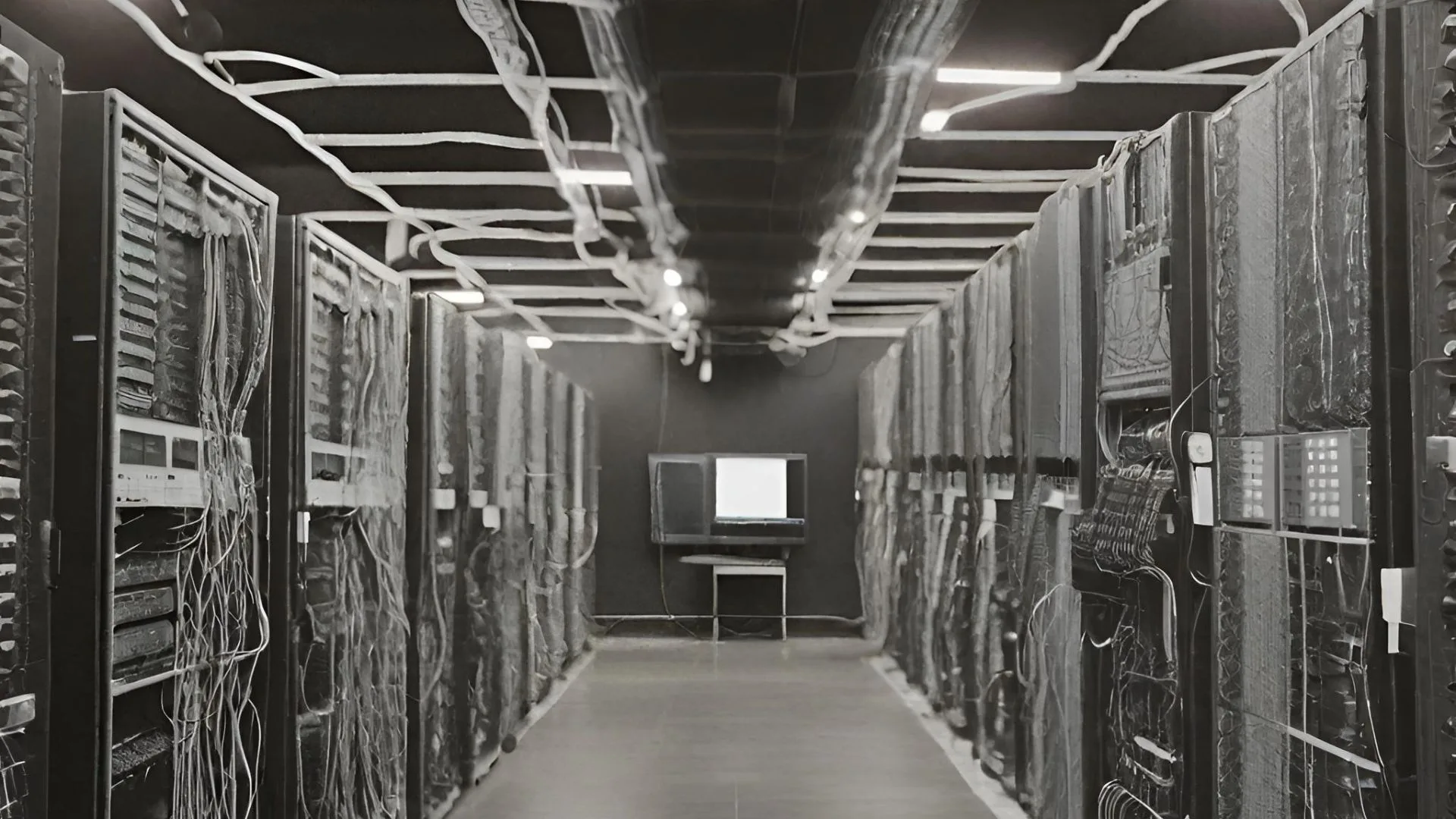In the ever-evolving landscape of Information Technology (IT), two crucial frameworks play a pivotal role in ensuring the seamless functioning of IT services and infrastructure: IT Operations Management (ITOM) and IT Service Management (ITSM). While both are essential components of IT governance, they serve distinct purposes and contribute differently to the overall efficiency of an organization. In this comprehensive guide, we will delve into ITOM vs ITSM, the differences and similarities between ITOM and ITSM, exploring their functionalities, use cases, and how they complement each other to optimize IT operations.
- Understanding IT Operations Management (ITOM)
- Decoding IT Service Management (ITSM)
- ITOM vs ITSM: Key Differences to Consider
- ITOM vs ITSM: Similarities to consider
- Case Study: Achieving Synergy – ITOM and ITSM Integration
- Choosing the Right Approach for Your Organization
- ITOM Vs ITSM: The Tech Futurist scoop
Understanding IT Operations Management (ITOM)
IT Operations Management (ITOM) is a set of practices and tools focused on managing and maintaining an organization’s IT infrastructure to ensure the delivery of high-quality services. The primary objective of ITOM is to enhance the efficiency and reliability of IT operations by automating tasks, monitoring performance, and proactively addressing issues.
Key Components of ITOM
| Component | Description |
|---|---|
| Configuration Management | Maintaining an accurate inventory of IT assets and their configurations. |
| Automation | Streamlining repetitive tasks and processes through scripting and automation tools. |
| Monitoring and Analytics | Continuous tracking of system performance and the analysis of data for proactive issue resolution. |
| Orchestration | Coordinating and automating complex workflows across different systems and platforms. |
ITOM Use Cases
ITOM is applied in various scenarios, such as:
- Automating Infrastructure Deployment: Deploying new servers, networks, and storage resources automatically, reducing manual intervention and minimizing errors.
Real-world Example:
Imagine an organization adopting ITOM practices to automate the provisioning of virtual machines and storage resources. This results in quicker and error-free deployments, ultimately improving overall system reliability.
Decoding IT Service Management (ITSM)
IT Service Management (ITSM) revolves around managing the end-to-end delivery of IT services to meet the needs of the business and its customers. The primary goal is to align IT services with the needs of the organization and ensure a seamless experience for users.
Key Components of ITSM
| Component | Description |
|---|---|
| Incident Management | Swift resolution of unexpected disruptions to IT services to minimize impact. |
| Change Management | Controlled implementation of changes to prevent service disruptions. |
| Service Desk | Centralized point of contact for users to report issues and seek assistance. |
| Service Catalog | A comprehensive listing of available IT services for users to request. |
ITSM Use Cases
ITSM finds application in various scenarios, including:
- Incident Management: Addressing and resolving unexpected disruptions promptly to minimize downtime and impact on users.
Real-world Example:
Consider an organization utilizing ITSM practices to efficiently handle and resolve incidents like system outages or application failures. The incident management process ensures quick identification, analysis, and resolution of such issues.
ITOM vs ITSM: Key Differences to Consider
Focus and Scope
One of the primary distinctions between ITOM and ITSM lies in their focus and scope. ITOM is predominantly concerned with the technical aspects of managing and optimizing IT infrastructure, including hardware, software, and networks. It emphasizes automation, monitoring, and configuration management to enhance operational efficiency.
On the other hand, ITSM focuses on the end-to-end delivery of IT services and aligning them with business objectives. Its scope extends beyond technical aspects to include service support, service delivery, and customer satisfaction. ITSM is inherently customer-centric, addressing the needs and expectations of users.
Timeframe and Perspective
ITOM typically operates in real-time or near-real-time, with a proactive approach to identify and address potential issues before they impact operations. It emphasizes continuous monitoring and automation to ensure the smooth functioning of IT infrastructure.
In contrast, ITSM often deals with a broader timeframe, incorporating both reactive and proactive elements. Incident management, for example, reacts to unforeseen disruptions in real-time, while change management takes a more planned and proactive approach to implement modifications without service disruptions.
ITOM vs ITSM: Key Performance Indicators (KPIs)
The key performance indicators for ITOM and ITSM differ based on their objectives and focus areas.
| ITOM KPIs | ITSM KPIs |
|---|---|
| Mean Time to Repair (MTTR) | Measures the average time taken to resolve technical issues. |
| Availability and Uptime | Tracks the percentage of time IT services are available and operational. |
| Automation Rate | Evaluates the extent to which repetitive tasks are automated. |
In ITSM, KPIs are more service-oriented:
| ITOM KPIs | ITSM KPIs |
|---|---|
| First Call Resolution (FCR) | Measures the percentage of incidents resolved during the initial user contact. |
| Customer Satisfaction | Gauges user satisfaction with the quality and speed of IT service delivery. |
| Incident Response Time | Evaluates the speed at which incidents are acknowledged and addressed. |
ITOM vs ITSM: Interconnectedness and Collaboration
While ITOM and ITSM have
distinct focuses, their success often relies on effective collaboration. In an organization, both frameworks need to work seamlessly together to ensure that technical operations align with business goals and user expectations. For instance, a change in IT infrastructure (ITOM) may trigger a need for corresponding adjustments in service delivery (ITSM).
ITOM vs ITSM: Tooling and Technology
ITOM and ITSM employ different sets of tools and technologies to achieve their objectives.
| ITOM Tools | ITSM Tools |
|---|---|
| Configuration Management Database (CMDB) | Centralized repository for IT assets and configurations. |
| Automation Tools | Scripting languages, orchestration tools for automating tasks. |
| Monitoring Solutions | Tools for real-time monitoring and analytics of IT infrastructure. |
On the ITSM side:
| ITOM Tools | ITSM Tools |
|---|---|
| Incident Management System | Ticketing systems for logging, tracking, and resolving incidents. |
| Change Management Tools | Platforms for planning, documenting, and implementing changes. |
| Service Desk Software | Centralized platforms for handling user requests and issues. |
ITOM vs ITSM: Similarities to consider
Alignment with ITIL Framework
Both ITOM and ITSM align with the Information Technology Infrastructure Library (ITIL) framework, a set of best practices for IT service management. ITIL provides a comprehensive framework for the effective design, delivery, and improvement of IT services. Organizations often adopt ITIL practices to enhance operational efficiency and align IT services with business goals.
Customer-Centric Approach
Despite their distinct focuses, both ITOM and ITSM share a common goal of delivering value to end-users. While ITOM aims to optimize technical operations, ITSM is centered around meeting the needs and expectations of customers. The alignment of these two perspectives ensures a holistic approach to IT governance, where technical excellence complements user satisfaction.
Continuous Improvement
Both frameworks emphasize the importance of continuous improvement. ITOM seeks to enhance operational efficiency through automation and proactive issue resolution, while ITSM focuses on improving service delivery and user satisfaction. The cyclical nature of continuous improvement ensures that IT operations and services evolve in response to changing business requirements and technological advancements.
Integration for Comprehensive IT Governance
To achieve optimal results, organizations often integrate ITOM and ITSM, leveraging the strengths of both frameworks. Integration allows for seamless communication and collaboration between technical operations and service management. For example, when ITOM detects a potential issue, it can trigger an incident in the ITSM system, leading to a coordinated and efficient resolution process.
Case Study: Achieving Synergy – ITOM and ITSM Integration
ITOM vs ITSM: The Need for Integration
The integration of ITOM and ITSM becomes imperative as organizations seek a unified approach to managing their IT landscape. Siloed operations often lead to inefficiencies, miscommunication, and a lack of visibility into the overall health of IT services. Integration bridges the gap between technical operations and service management, fostering a collaborative environment.
Benefits of ITOM and ITSM Integration
- Enhanced Visibility: Integration provides a comprehensive view of IT operations and services, enabling better decision-making and problem-solving.
- Efficient Incident Management: Automated incident creation from ITOM alerts streamlines the resolution process, reducing response times and minimizing service disruptions.
- Proactive Problem Resolution: ITOM data can be used to identify patterns and trends, allowing for the proactive identification and resolution of potential issues before they impact users.
Tools for Seamless Integration
Several tools facilitate the seamless integration of ITOM and ITSM:
- ServiceNow: A platform that integrates ITOM and ITSM, offering a unified solution for managing services, assets, and operations.
- BMC Helix: Provides integrated solutions for ITOM and ITSM, enabling organizations to streamline workflows and improve overall IT efficiency.
- Micro Focus Operations Bridge: Combines ITOM capabilities with automated incident and problem management, offering end-to-end visibility and control.
ITOM and ITSM: Real-world Example: Enhancing Service Delivery with Integration
Consider a large enterprise adopting ITOM and ITSM integration using ServiceNow. When ITOM detects a potential network performance issue, it automatically triggers an incident ticket in the ITSM system. The service desk is notified, and relevant teams collaborate using a unified platform. This seamless integration ensures a swift resolution, minimizing downtime and enhancing overall service delivery.
Choosing the Right Approach for Your Organization
Assessing Organizational Needs
Before deciding between ITOM and ITSM or opting for integration, organizations should conduct a thorough assessment of their specific needs, goals, and challenges. Understanding the nature of IT operations and service requirements helps in determining the most suitable approach.
Scalability and Flexibility
Consider the scalability and flexibility of each framework in relation to your organization’s growth and evolving IT landscape. While ITOM focuses on optimizing technical operations, ITSM provides a broader service-oriented perspective. Choose a framework or a combination that aligns with your scalability requirements and flexibility in adapting to future changes.
Budget Considerations
Evaluate the budget constraints of your organization. While both ITOM and ITSM bring significant value, the implementation and maintenance costs may vary. Assess the total cost of ownership, considering factors such as licensing, training, and ongoing support, to make an informed decision based on your budget constraints.
Future-Proofing Your IT Strategy
Given the dynamic nature of technology, it’s crucial to future-proof your IT strategy. Opt for solutions that can adapt to emerging technologies and changing business needs. Integrating ITOM and ITSM provides a comprehensive and future-proofed approach, allowing your organization to stay agile and responsive to evolving challenges.
ITOM Vs ITSM: The Tech Futurist scoop
In the complex landscape of IT governance, ITOM and ITSM emerge as critical frameworks, each contributing uniquely to the overall efficiency of an organization. While ITOM focuses on optimizing technical operations through automation and monitoring, ITSM ensures the seamless delivery of IT services aligned with business goals and user satisfaction.
Understanding the differences and similarities between ITOM and ITSM is essential for organizations seeking to strike the right balance in their IT strategy. Integration of these frameworks offers a holistic approach, fostering collaboration and communication between technical and service-oriented functions.
As technology continues to advance, the synergy between ITOM and ITSM becomes increasingly crucial. Organizations that embrace this integration position themselves for success, with the ability to adapt to changing landscapes, deliver high-quality services, and proactively address the challenges of modern IT environments. In the end, it’s not about choosing between ITOM and ITSM, but rather recognizing their complementary roles in achieving comprehensive IT governance.


